Colour separation of leather
Contents
- 1 Colour separation on Leather
- 1.1 Colour detachment in furniture leather
- 1.2 Colour separation at car leathers
- 1.3 Colour detachment in split leather, corrected grain or defective leathers
- 1.4 Colour detachment in PU leather
- 1.5 Colour abrasion and colour softening
- 1.6 Two-tone leather with colour abrasion
- 1.7 Rub off finish with colour abrasion
- 1.8 Colour detachment caused by deficient leather repairs
- 2 Tape Test to detect risks of color separation
- 3 Additional information
Colour separation on Leather
Illustration of leather dyeing.
Finished leather gets a pigment based coat of paint on top in the tannery. Most times the colour layer is sprayed onto the leather. The colour layer can also be rolled or a coloured foil can be glued on top of the leather. With use, these colour wears off depending on the quality of the leather but it can also lead to unexpected colour separations.
Typical use related abrasion in car and furniture leathers.
Colour detachment in furniture leather
A rare, but regularly occurring phenomenon, is the colour separation on furniture leather. The detachment begins at one point, and a layer can be pulled off. The triggers can be different. But the cause is a quality problem of the leather colouring in the leather production. Good leather is so well manufactured that no colour detachment cannot occur without expected reason. Primer, colour and finish are sprayed rapidly one layer after the other so the fresh layers stick well togehter on each other and become inseparable. Sometimes the bonding to the lower layer is not good enough. This may be due to incompatible layers or too long waiting time between the working steps. Then, the upper colour layer softens by contact with sweat on skin or hair grease and becomes unstable and starts beeing sensitive and can be rubbed off. The reason for this is not the normal use. It's a quality problem which shouldnt occure.
Atypical color detachment in furniture leather. No normal aging.
A shortcoming with testing standards is the lack of testing with skin fats. These naturally occurring fats dissolve the colour layer on the leather. Since this is not checked at testing stages, the leather is used and customers blamed for misuse or incorrectly cleaning or maintaining their leather furniture. The industry is aware that the cause is a quality defect which does not ensure the practicality of the furniture, but this is not revealed by the tests. It is incomprehensible that there is no test for fats, as leather is traditionally cultivated with grease and oil based products, and each person has oily skin, greasy sweat and oily hair. The so-called "sweat test" only checks the pH value with a water based substance, but not the fat/oil sensitivity of the leather.
Typical colour separation in the contact area, within a few months of use.
Colour separation at car leathers
Car leather is usually thoroughly tested and very durable. Therefore colour separation occurs rarely. But there is a phenomenon that happens to some manufacturers where the colour layer peels off the rear seat by the window for no apparent reason.
Colour separation at the rear of the BMW 5 Series and Mercedes CLK from 2002.
Two more cases of the Mercedes CLK. Right W209 from year 2004. Left CLK of year 2003.
Colour detachment in split leather, corrected grain or defective leathers
Cheap leather has skin defects prior to tanning. These damages are filled with special filling products and colour layers or foil coatings hide this. To even the surface, the |grain is then sanded down. Unhealed scared areas ore fibre looseness can break or partial dissolution of the colour layer can happen in later use.
Typical fractures in leather with poorer quality leather. The leather underneath the finish is unstable and cracks.
Typical colour separation on inexpensive split leather surfaces.
Typical film detachment in coated split leathers.
Colour detachment in PU leather
PU leather is plastic film coated split leather. Such leather is inexpensive and has variations in quality. Colour separation occurs frequently.
Typical cases of film separation in PU leather.
Colour abrasion and colour softening
Also a too soft finish can lead to stickiness and colour dissolve. This can be for various reasons.
- A tanner's attempted is in all working steps to try to let appear a leather despite surface coloration to result as soft and natural as possible. To achieve this, there has to be an appropriate balance between softness and abrasion resistance. If the colour is too soft, it will become sticky and dissolvs when exposed to heat and the forces of use. A typical example of this phenomenon was the Colour Concept of Volkswagen. Some vehicles had this problem. BMW had a leather with a chameleon-embossing in the Z4 model. Some drivers had a problem getting stuck to their seats on hot summer days. When trying to clean the leather, the partially dissolved finish rubbed off. Mercedes had a soft paint on the plastic parts of the SLK. The paint was so soft that the colour could be taken off just by pushing with a fingernail. In forums they called this phenomenon the "freckled" effect. Unfortunately, the parts usually had bright colours and the plastic underneath them was black. Specialised companies can re-dye those parts, but it is complicated and expensive. However, other vehicle manufacturers have painted plastics in door handles or even radio buttons where the too soft colour rubs down with the time.
- Professional Leather repair companies color older or damaged leather new again. Pigmented leather furniture gets damaged in hair and skin contact areas. The pigmentation softens and rubbs of with the time. The rest of the furniture is still as good as new, but ugly fat marks deface the furniture. Specialised companies can degrease and re-dye those areas. If it is not sufficiently degreased during this process, the fats in the leather migrate back to the surface and the colour will need repairing again. It gets sticky and rubbs of. Sometimes the grease stains have wandered for years through the leather, and only by a very thorough degreasing for several days, you can ensure that repairs are made permanent. The same applies to armrests and steering wheels in cars.
- Nowadays leather is dyed in a multilayer process. With a primer as base, then comes the leather colour and then the top coat. The Primer is a bonding agent which is set soft, so the leather also feels soft. If too much primer is applied in the manufacture or repair, under the leather colour is a too soft layer. When the leather is warmed by sun or skin contact, the colour layer starts shifting on the too soft primer layer.
Too soft steering wheel colour. - BMW chameleon leather with pressure points of trousers rivets.
The SLK from Mercedes with "freckles effect".
Softened leather colour in the head area. - Specialised leather repair companies only are able to fix this.
Two-tone leather with colour abrasion
Antique leather or leather with a two-colour effect are similar produced. Mostly a darker and transparent colour layer is spraied on a light covering colour. This gives the leather a colour depth. It can happen that the upper, semi-transparent patina colour wears off from the underlying main colour. This can have several causes. Sometimes the upper colour is too soft or too sensitive to water and fats (skin and hair contact areas). On Chesterfield furniture, that patina is accepted as that is an intentional ageing effect, but with modern furniture, it is considered a damage.
Often this phenomenon gets visible when cleaning the leather. The softened patina colour removes during the cleaning process. In most cases the manufacturer of the cleaner is suspected. The test is very simple.
Do a test with a damp cloth moistened with water. If the color dissolves in the hair or skin contact areas by water, the cleaner is not the cause. In the unloaded area, the phenomenon can often not be reproduced because the color has not been weakened or softened by the skin or hair contact. If a cloth moistened with water does not remove color, the cleaner could be too too strong. A too long moistening or excessive rubbing can soften or dissolve a leather color too.
Typical abrasion of the patina colour by friction or softening in the contact areas.
Rub off finish with colour abrasion
Leather with a rub off finish is leather were a darker patina colour is wiped onto a lighter pigment layer. This rubs off over time and gives the leather its characteristic appearance. As long as the abrasion does not take place too fast or too much, it is a desired effect.
Typical abrasion of the patina colour, which is usually a desirable effect.
Colour detachment caused by deficient leather repairs
Damaged leather can be recoloured by specialised companies. Nevertheless, it can happen that the work is carried out incorrectly and the new applied color layer is peeling off again.
Reasons for colour detachments caused by improper repairs:
- Insufficient degreasing of sweat soaked contact areas of skin or hair.
- Shoes and boots treated intensively with silicone, oil and fat containing shoe care products are difficult to clean good enough before a colouration. These products then act as like release agents.
- Some leather have anti soling additives in the top coat. If these are not propper removed before colouration, they may have the effect of release agents.
Experienced leather repair professionals know these problems and how the leather should be checked before any repair work. Most experts check by wiping with their hand over the surfaces to find out which leather could be problematic. Problematic leather has a greasy or slippery grip.
detachment of the top coat after inpropper cleaning before correcting the gloss level. - Detachment of the leather colour on shoes after inpropper degreasing before applying a new colour.
Tape Test to detect risks of color separation
Im Rahmen von Nachfärbungen bei Leder kommt es vor, dass sich an einer kleinen Stelle ein Schaden befindet. Fängt man an an der Stelle zu knibbeln, kann man mit den Fingernägeln die Farbe fassen und weiter abziehen. Bei vielen Arten von Beschichtungen ist das möglich. Hat die Beschichtung einen ausreichend starken Film, lässt sich der Film anlösen und reißt nicht ein. Oft wird dieses Verhalten für einen Mangel gehalten. Aber im Alltag der Nutzung der Oberfläche gibt es keine Situation, wo sich deshalb ein Schaden entwickeln würde. Das wäre nur der Fall, wenn sich der Film zu leicht anlösen würde, also schon ohne eine Vorschädigung der Oberfläche. Um zu testen, wie stark der Film haftet, gibt es einen einfachen Test: den "Tape-Test". Man klebt normales Kreppband fest auf die Oberfläche auf und reißt es mit Schwung herunter. Haftet die Farbe besser am Kreppband als am Leder, könnte ein Mangel vorliegen. Es wäre nicht normal. Bleibt nichts am Kreppband haften, ist die Färbung fachgerecht, selbst wenn man den Film mit den Fingernägeln zu fassen bekäme und abziehen könnte.
Daher in solchen Fällen den Schaden durch Abpulen der Farbschicht nicht vergrößern. Fachbetriebe haben es leichter, wenn die abgezogene Fläche kleiner ist. Da von der noch nicht abgezogenen Fläche dann kein Risiko ausgeht, vergrößert man durch Abpulen nur unnötig den Schaden, weil der Reparaturaufwand erheblich steigt.
Evtl. vergrößert das Abziehen nur den Schaden. - Der Tape Test zeigt, dass hier etwas nicht in Ordnung ist.
Der Tape-Test hat aber auch eine weitere Funktion in der Lederwerkstatt. Manche Flächen erwecken den Eindruck, dass die Nachfärbung evtl. nicht auf dem Leder haften könnte. Solche Leder fühlen sich glitschig oder schmierig an. Es könnte dann ein Teflonleder sein, oder es sind Haut- oder Haarfette ins Leder eingedrungen. Eine zu starke Tränkung durch fettende oder silikonhaltige Lederpflege kann auch die Ursache für eine eingeschränkte Haftung von Reparaturfarben auf Leder sein.
The tape test helps in order to check whether the surface is sufficiently degreased, silicone-free, or otherwise coated. Glue the masking tape onto the leather surface and test how well it adheres. If it slips off smacking and sticks well, everything is all right. If it adheres only weakly or not at all, a repair or coloring can not be started.
Dye transfer from leather and color separations of leather.
Additional information








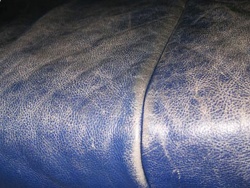
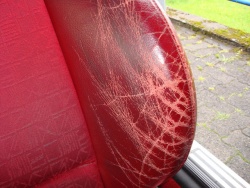
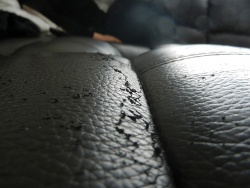
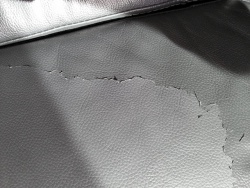
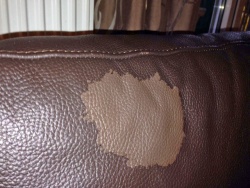
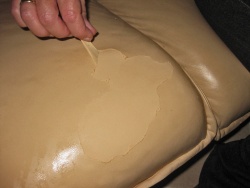
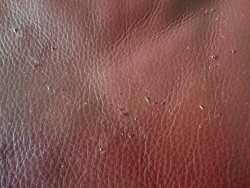
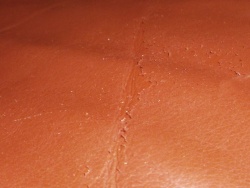
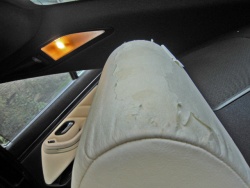
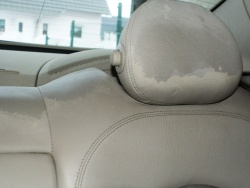
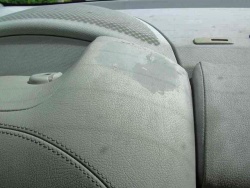
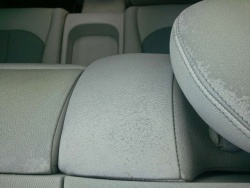
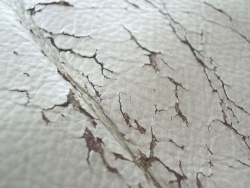
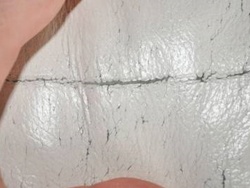
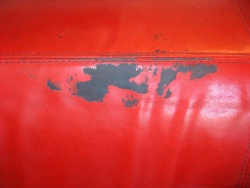
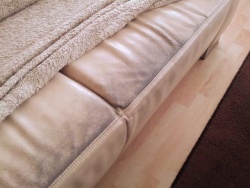
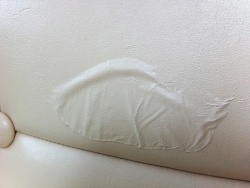
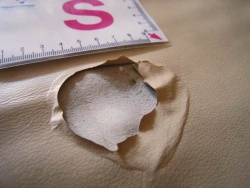

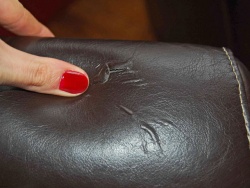
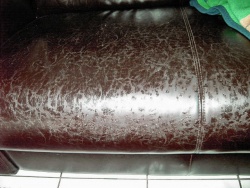
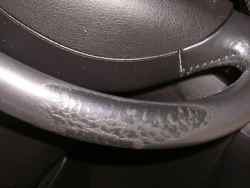
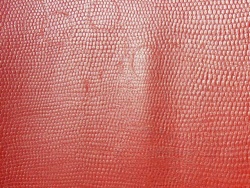
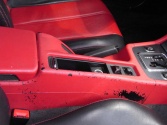
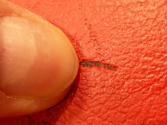
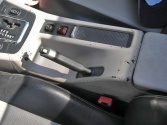
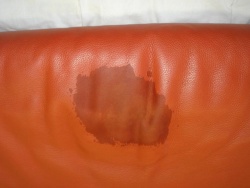
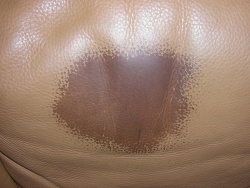
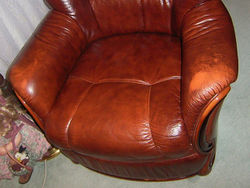
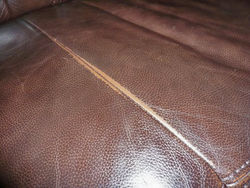
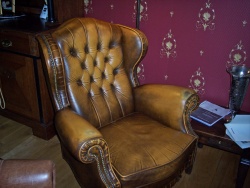
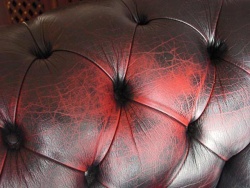
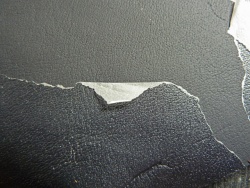
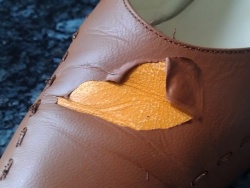
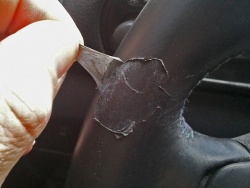
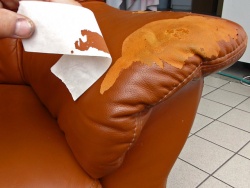

 a kotori web solution
a kotori web solution